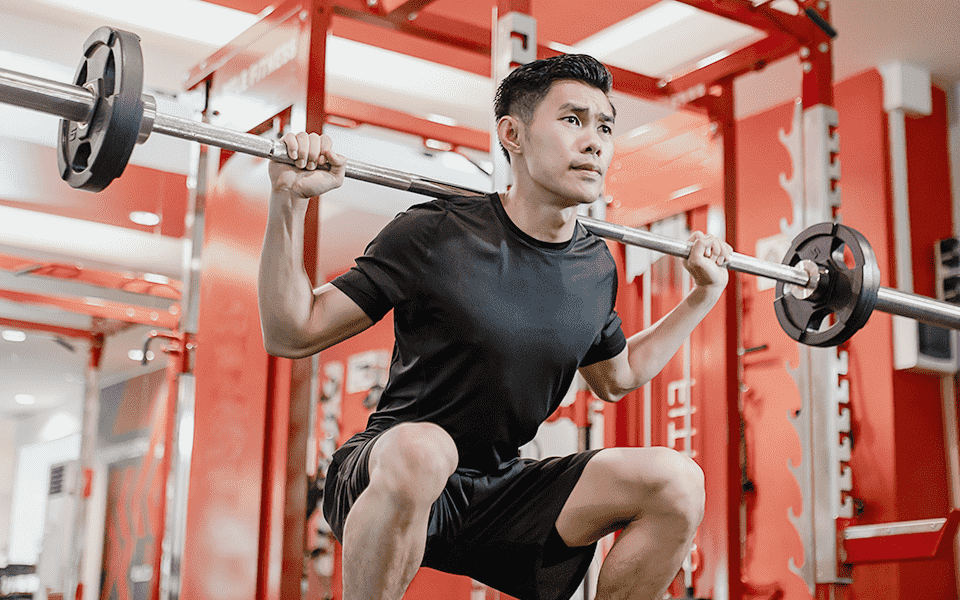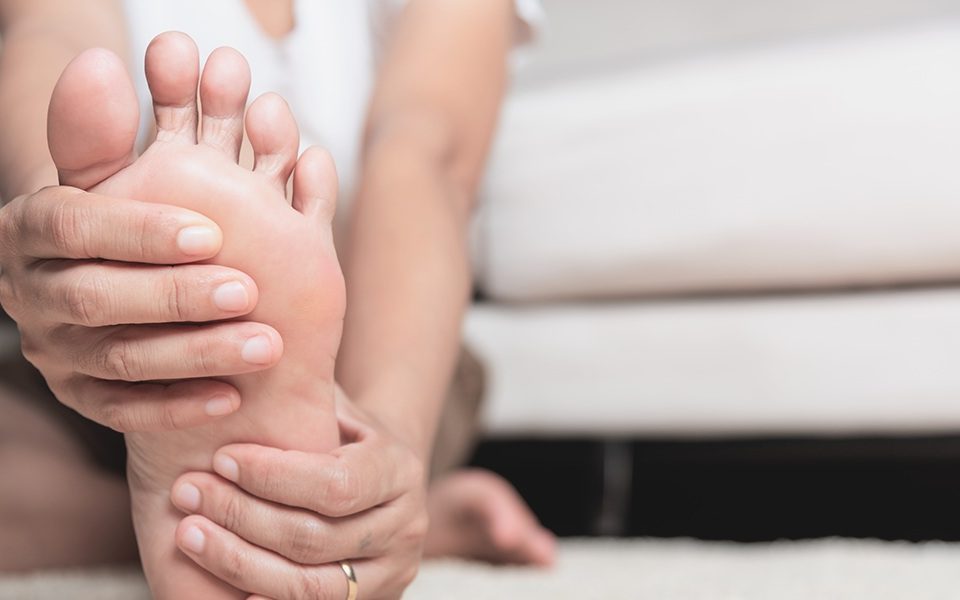Carpal Tunnel Syndrome Symptoms and Treatment
by: Amanda Chua, TCM Physician, Regis Wellness
Last updated: November 29, 2025
Carpal tunnel syndrome is a common condition that causes numbness, tingling, and pain in the hand. More than eight million people are affected by carpal tunnel syndrome every year.
Carpal Tunnel Syndrome in Singapore
Carpal Tunnel Syndrome is the most common peripheral nerve entrapment syndrome in Singapore, affecting approximately 1% of our population. It is estimated that 5% of all Singaporeans will experience carpal tunnel syndrome in their lifetime.

Manage your carpal tunnel syndrome at Regis Wellness
High quality, effective, holistic treatments
What is Carpal Tunnel Syndrome?
Carpal tunnel syndrome is usually caused by pressure put on the median nerve that passes through the carpal tunnel on the palm side of the wrist. The carpal tunnel refers to a narrow passageway surrounded by bones and ligaments.
The pressure on the median nerve at the carpal tunnel can lead to tingling, numbness, pain and weakness. Patients with carpal tunnel syndrome often experience these symptoms in their first three fingers.
Carpal tunnel syndrome is three times as common in women than men and is frequently diagnosed between the ages of 30 and 60. It is possible for carpal tunnel syndrome to be cured, but those with severe cases may still experience recurring symptoms even after surgery.
Symptoms of Carpal Tunnel Syndrome
Symptoms of carpal tunnel syndrome can develop over time, going from mild to severe. It is usually more severe in your dominant hand.
Signs of carpal tunnel syndrome include:
- Tingling and numbness of the first three fingers
- Weakened grip strength
- Pain
Severe symptoms of carpal tunnel syndrome include:
- Persistent numbness of the first three fingers
- Permanent weakness in the thumb muscles
Regardless of severity, symptoms of carpal tunnel syndrome can affect your daily life. It is important that you see a doctor if you experience these symptoms so that they can be treated.
Risk factors for Carpal Tunnel Syndrome
Knowing the risk factors for carpal tunnel syndrome can help you adjust certain lifestyle habits to lower your risk of developing carpal tunnel syndrome. Risk factors for carpal tunnel syndrome include:
- Anatomic factors. Past wrist injuries such as fractures or dislocations can put pressure on the median nerve. People with smaller carpal tunnels have a higher risk of developing carpal tunnel syndrome.
- Sex. Carpal tunnel syndrome is approximately 3 times more common in women than in men.
Health conditions that may lead to nerve damage. Chronic illnesses such as diabetes can cause nerve damage, including the median nerve, leading to carpal tunnel syndrome. - Obesity.
- Changes in body fluids. Fluid retention can lead to additional pressure on the median nerve. This is common during pregnancy and menopause.
- Workplace factors. Repetitive usage of vibrating tools and prolonged or repetitive flexing of the wrists can cause damage to the median nerve. Prolonged usage of a keyboard or mouse can also strain the wrists heavily, especially with poor posture and form.
Complications of Carpal Tunnel Syndrome
If carpal tunnel syndrome is left untreated, it can worsen over time, causing complications such as permanent damage to your nerves and muscles.
Diagnosing Carpal Tunnel Syndrome
To accurately check for carpal tunnel syndrome, a doctor will assess your medical history, conduct a physical examination. Most of the time this can be diagnosed clinically. However, to confirm more complicated lesions, a nerve conduction study can be considered, and this will be ordered by a neurologist or a hand surgeon.
Preventing Carpal Tunnel Syndrome
While there are no known prevention methods for carpal tunnel syndrome, there are ways in which you can minimise stress on your hands and wrists while you carry out your daily activities.
These include:
- Reducing your force and relaxing your grip
- Adopt good form and posture
- Use a mouse that is comfortable for your wrist
- Keeping your hands warm
Carpal Tunnel Syndrome Treatment
There are multiple ways to treat and manage carpal tunnel syndrome, especially in its early stages.
Lifestyle Changes
Lifestyle changes can be made in order to reduce the strain on your wrists which can reduce symptoms of carpal tunnel syndrome such as pain as well as prevent your condition from worsening. These include:
- Changing wrist position. Bending your wrist strains your wrist. By avoiding placing your wrist in a bent position for long periods of time, you can reduce this strain.
- Proper posture. Maintaining a proper posture while using a computer can be helpful in keeping your wrists in a good position. Avoid a forward-head posture and slouching.
- Hand ergonomics. Placing your keyboard at a proper height to avoid straining your wrists when typing can go a long way in managing carpal tunnel syndrome.
- Stretching. Taking breaks in between your work to stretch your wrists can help relieve tension and pain. This is especially useful for those who have to use their hands and wrists for prolonged periods of time at work, such as delivery truck drivers or office workers who spend the majority of their time in front of a computer.
Wrist Splinting
A splint is a supportive device used to protect an injured body part or a fracture. It keeps the affected body part still which helps with pain and promotes healing. Symptoms of carpal tunnel syndrome often worsen at night and wearing a splint while you sleep can help to relieve such symptoms. This can also be effective in preventing daytime symptoms.
Physiotherapy for Carpal Tunnel
Physiotherapy is a key conservative treatment option for carpal tunnel syndrome, especially in its early stages. A tailored physiotherapy program can help relieve pain, reduce tingling and numbness, improve hand and wrist function, and may delay or even prevent the need for surgery in some cases.
Treatment typically combines pain relief techniques, nerve and soft tissue mobilisation, and exercises to restore strength and function. Your physiotherapist will assess your symptoms, work demands, and daily activities to design a program that suits your specific needs.
Carpal tunnel physiotherapy may include the following treatment focuses:
- Symptom Relief & Pain Management
- Ultrasound therapy uses deep heat generated by high-frequency sound waves to reduce pain and inflammation in the carpal tunnel region. By improving blood flow and tissue healing, it may also support better nerve function.
- Transcutaneous Electrical Nerve Stimulation (TENS) delivers low-voltage electrical impulses through electrodes on the skin to help block pain signals and stimulate the release of endorphins. This can decrease pain perception and promote relaxation of tight forearm and hand muscles.
- When appropriate, hot and cold therapy may also be recommended to manage discomfort, reduce swelling, and ease stiffness around the wrist and hand.
- Nerve Mobility, Soft Tissue & Joint Care
- Manual therapy techniques such as soft tissue release, myofascial techniques, and gentle joint mobilisation of the wrist, hand, and forearm can help reduce tension around the carpal tunnel and improve mobility.
- Nerve gliding (nerve flossing) exercises may be prescribed to promote smoother movement of the median nerve through the carpal tunnel and reduce nerve irritation.
- Stretching exercises for the forearm flexors and extensors can help relieve muscle tightness that contributes to increased pressure in the carpal tunnel.
- Strength, Function & Recurrence Prevention
- Specific strengthening exercises for the hand, wrist, and forearm may be introduced to support better joint alignment and control, while avoiding excessive strain on the nerve.
- Our physiotherapist may provide ergonomic and posture advice, including recommendations on keyboard and mouse use, work station setup, and activity modification to reduce repetitive strain.
- Education on activity pacing, rest breaks, and symptom monitoring helps you manage your condition independently and reduce the risk of flare-ups or progression.
By combining these approaches into a personalised treatment plan, physiotherapy aims to relieve symptoms, improve hand and wrist function, and help you continue your daily activities or work with greater comfort and confidence.
TCM for Carpal Tunnel
Traditional Chinese Medicine (TCM) views carpal tunnel syndrome (CTS) as a disruption of Qi and blood flow within the meridians that pass through the wrist, hand, and forearm. TCM aims to restore balance, relieve pain, and support healthy nerve function through natural, holistic treatments tailored to each individual.
Treatment duration varies depending on the severity and chronicity of CTS. Many patients find relief through a combination of acupuncture, cupping, herbal medicine, and lifestyle adjustments designed to promote circulation, reduce inflammation, and restore harmony within the affected meridians.
TCM approaches for carpal tunnel can be grouped into the following treatment focuses:
- Pain Relief & Nerve Regulation
- Acupuncture uses fine needles inserted into specific points to promote Qi flow, improve circulation, and reduce inflammation. For CTS, acupuncture may help ease wrist pain, numbness, and tingling by regulating the affected meridians and supporting nerve healing.
- Electro-acupuncture (when appropriate) may also be used to enhance stimulation, improving nerve conduction and reducing muscle tension around the wrist and forearm.
- Soft Tissue Release & Circulation Enhancement
- Cupping therapy uses gentle suction to increase local blood flow, reduce muscle tightness in the forearm, and relieve stagnation that may be compressing the median nerve.
- Internal Support & Long-Term Balance
- TCM herbal medicine is prescribed based on individual patterns of imbalance. Herbal formulas may include ingredients that reduce inflammation, nourish the tendons, calm nerve irritation, and support healthy circulation.
- Our TCM physicians may also provide dietary and lifestyle advice, such as avoiding repetitive strain, improving posture, and adopting movement habits that protect the wrist and hand.
- For chronic or recurring CTS, ongoing maintenance acupuncture or cupping sessions may help sustain relief and prevent flare-ups.
By addressing both the symptoms and the underlying energetic imbalances, TCM offers a comprehensive, natural approach to alleviating carpal tunnel discomfort and supporting long-term wrist and nerve health.
Disclaimer:
The information on this website, including but not limited to, text, graphics, images, videos and all other materials contained on this website is for informational purposes only. None of the material is meant to replace a certified and registered Doctor's professional medical advice, diagnosis, and treatment.
No warranties or representations are given in respect of the medical information. Regis Wellness, Regis Wellness’s staff, and the website's operator will not be held liable if a user suffers any injury or loss after relying upon the medical information on this website.
Any devices used for technology-enhanced therapies are intended for use only for general well-being purposes or to encourage or maintain a healthy lifestyle and is not intended to be used for any medical purpose (such as the detection. diagnosis, monitoring, management or treatment of any medical condition or disease). Any health-related information provided by this device or software should not be treated as medical advice. Please consult a certified and registered Doctor for any medical advice required. As with all medical conditions, there are exceptions and nuances to individuals’ condition and treatment modalities. We aim to provide only a general understanding for each section.
Carpal Tunnel Syndrome, SingHealth, https://www.singhealth.com.sg/patient-care.
“Carpal Tunnel Syndrome.” Carpal Tunnel Syndrome - Diagnosis and Treatment, Mayo Foundation for Medical Education and Research, 25 Feb. 2022, https://www.mayoclinic.org/diseases-conditions/carpal-tunnel-syndrome/diagnosis-treatment/drc-20355608.
“Carpal Tunnel Syndrome.” Carpal Tunnel Syndrome - Singapore General Hospital, Singapore General Hospital, 1 Mar. 2016, https://www.sgh.com.sg/news/medical-news-singhealth/carpal-tunnel-syndrome.
“Carpal Tunnel Syndrome.” Carpal Tunnel Syndrome - Symptoms and Causes, Mayo Foundation for Medical Education and Research, 25 Feb. 2022, https://www.mayoclinic.org/diseases-conditions/carpal-tunnel-syndrome/symptoms-causes/syc-20355603.
“Carpal Tunnel Syndrome.” Carpal Tunnel: Causes, Symptoms, and Diagnosis, Healthline Media, 16 Mar. 2017, https://www.healthline.com/health/carpal-tunnel-syndrome.
Khosrawi, Saeid et al. “Acupuncture in treatment of carpal tunnel syndrome: A randomized controlled trial study.” Journal of research in medical sciences : the official journal of Isfahan University of Medical Sciences vol. 17,1 (2012): 1-7.
Miller, Margot. “Physical Therapy Guide to Carpal Tunnel Syndrome.” Guide | Physical Therapy Guide to Carpal Tunnel Syndrome, Choose PT, 15 Jan. 2021, https://www.choosept.com/guide/physical-therapy-guide-carpal-tunnel-syndrome
“Nerve Conduction Velocity (NCV) Test: What to Expect.” Nerve Conduction Velocity: Purpose, Procedure & Results, Healthline Media, 3 June 2021, https://www.healthline.com/health/nerve-conduction-velocity.
Tsai, Meng-Chuan et al. “Characteristics of Traditional Chinese Medicine Use for Carpal Tunnel Syndrome.” International journal of environmental research and public health vol. 16,21 4086. 24 Oct. 2019, doi:10.3390/ijerph16214086
Wheeler, Tyler. “Carpal Tunnel Syndrome.” Carpal Tunnel Syndrome: Symptoms, Causes, Diagnosis, Treatment, Complications, and Prevention, WebMD, 19 Nov. 2021, https://www.webmd.com/pain-management/carpal-tunnel/carpal-tunnel-syndrome.


